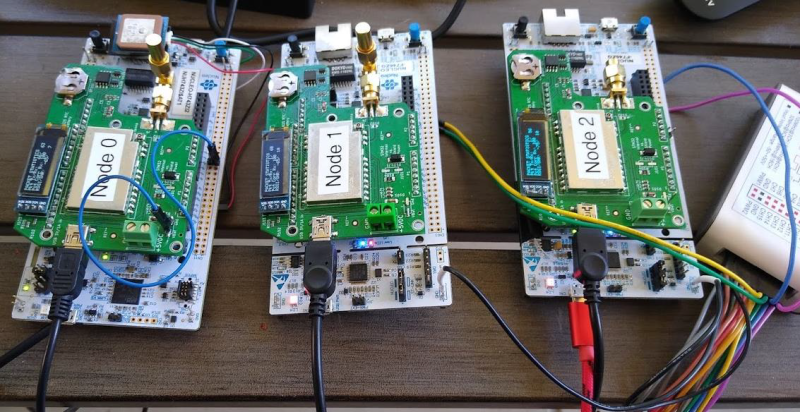THE ANONYMOUS

LoRa is great for sending short data packets over long ranges but is not normally suitable for voice communications. [Dan Fay] is looking to change this with QMesh, a synchronized, flooded mesh network protocol for ham radio applications.
In a flooded mesh network every node repeats every message it receives. This has the theoretical advantage of making the network self-healing if a single node stops working, but often just means that the nodes will interfere with each other. Thanks to some characteristics of LoRa, [Dan] is using several tricks to get around this packet collision problem. LoRa network can make use of the “capture effect”, which allows a receiver to differentiate between two packets if the power level difference is large enough. This is further improved by adding forward error correction and slightly changing the frequency and timing of the LoRa chirps. QMesh also implements TDMA (Time Division Multiple Access) by splitting transmission into time slots, and only transmitting every third slot. This means it is operating on a 33% duty cycle, which is much higher than the 0.1%-10% allowed on license-free ISM-bands, which legally limits it to the ham bands.
On the hardware side, [Dan] has been using the STM32 NUCLEO-144 development boards with F4/L4/F7/H7 microcontrollers and a custom shield with a 1 W LoRa module and OLED screen. While [Dan] wants to eventually build handheld radios, he plans to first develop small FM repeaters that encode voice as codec2 and use QMesh as a backhaul. QMesh is still under development, but we would love to see the results of some long-range testing, and we are excited to see how it matures.
If your interested in a more basic LoRa-based human-to-human messaging system, take a look at Meshtastic. It’s been going very rapidly over the past year. To learn more about LoRa and other digital modulation schemes, check out the crash course we did with an SDR a while back.
from Hackaday https://ift.tt/34XFx6I
No comments: